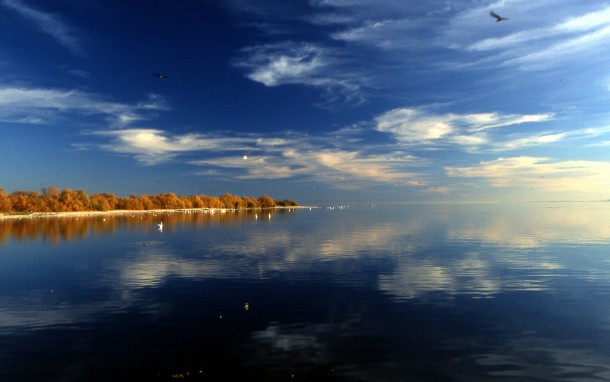-
Videos
Silver in the Sea
Back to the media page mIf you happen to find yourself staring at the ocean one day, wondering what would be left behind if you boiled a cubic kilometre of seawater, the answer is that you would get pretty much everything. Yes, this includes a small amount of silver. To be precise, seawater contains about 2-100 ppt of silver. There is even a bit of gold in seawater, about 0.1 to 2 mg / ton. That’s a lot of boiling and a lot of seawater required. Nevertheless, people have tried to extract silver and other precious metals from the oceans for a long time. Apart from salt, and smaller quantities of manganese, no other mineral has proven to be extractable at commercial rates from the world’s oceans. This has not deterred the following people.

The Electrolytic Marine Salts Company
In 1898 two friends from Martha’s Vineyard, Prescott Jernegan and Charles Fisher, decided to start the Electrolytic Marine Salts Company. Through great showmanship, these entrepreneurs managed to convince stockholders that they could extract silver from the sea – and make a profit. Unfortunately, their science was bogus, and the scheme apparently involved Fisher donning a diving suit to insert precious metals into their extraction apparatus during "demonstrations". Suffice it to say, the technology was proven to be a scam, although not before Fisher escaped to New Zealand and Jernegan to the Philippines.
The Ethyl Dow Chemical Company
Then, in an Oct 7, 1934 article, a curious story entitled "Scientists Extract Gold and Silver from Ocean" appeared in the Reading Eagle newspaper in Massachusetts. It claims that a gold and silver nugget the size of a pinhead was produced as a byproduct at a bromine extraction plant. The EthylDow Chemical Company announced that they were able to change the electrochemical nature of gold and silver by pouring sulphuric acid into the same sea water that they usually use for bromine production. By mixing colloidal sulphur, the silver and gold settled down to the bottom along with the sulphur. The total amount of seawater used to produce the pinhead? 12 tons. Hardly a commercial production method, but at least they managed to do it.
Preussag AG
By 1979, the silver in seawater craze had reached a peak thanks to a surge in silver prices. A reported feasibility study by the German mining firm Preussag on behalf of the Sudanese and Saudi Arabian governments was underway to confirm the commerciality of extraction and processing of underwater brine deep in the Red Sea. Chemical analysis suggested that a special mud-like substance inside deep crevices on the sea floor contained anomalous amounts of gold and silver. After initial experimentation, the mission managed to produce recovery rates of up to 0.07 percent silver. However, the mining plans were scrapped in the early 1980s with depressed global ore prices.
Odyssey Marine Exploration
In 2012, Odyssey Marine Exploration, a Floridian salvage company was on the hunt for the lost wreckage of the SS Gairsoppa, a british ship sunk by a German U-Boat in 1941 with all souls but one lost in the attack. The ship sank 300 miles southwest of Ireland in waters 2.9 miles deep and with it went 240 tons of silver bullion. After an agreement with the British Government, Odyssey set to work salvaging the silver from the ocean’s depths, then valued at $190 million.
Through scientific breakthroughs and a healthy dose of will power, people have gone through great lengths to find silver in the sea. While it is certainly there, the commerciality of extracting it remains elusive, unless you can find it waiting for you in bullion form.
- Home
- About
- Portfolio
- Sustainability
- Investors
- News & Media
- Blog
- Contact
© 2024 Endeavour Silver Corp.
All rights reserved.
Cookies are used to make this website work and to enhance your experience. To learn more about the types of cookies this website uses, see our Cookie Policy. You can provide consent by clicking the "I Consent" button or by canceling this cookie notice.
Cookies are used to make this website work and to enhance your experience. To learn more about the types of cookies this website uses, see our Cookie Policy. We need your consent to use marketing cookies. Marketing cookies are used to track visitors across websites. The intention is to display ads (via third party services) that are relevant and engaging for individual users. Please select the checkbox below to indicate your consent.

